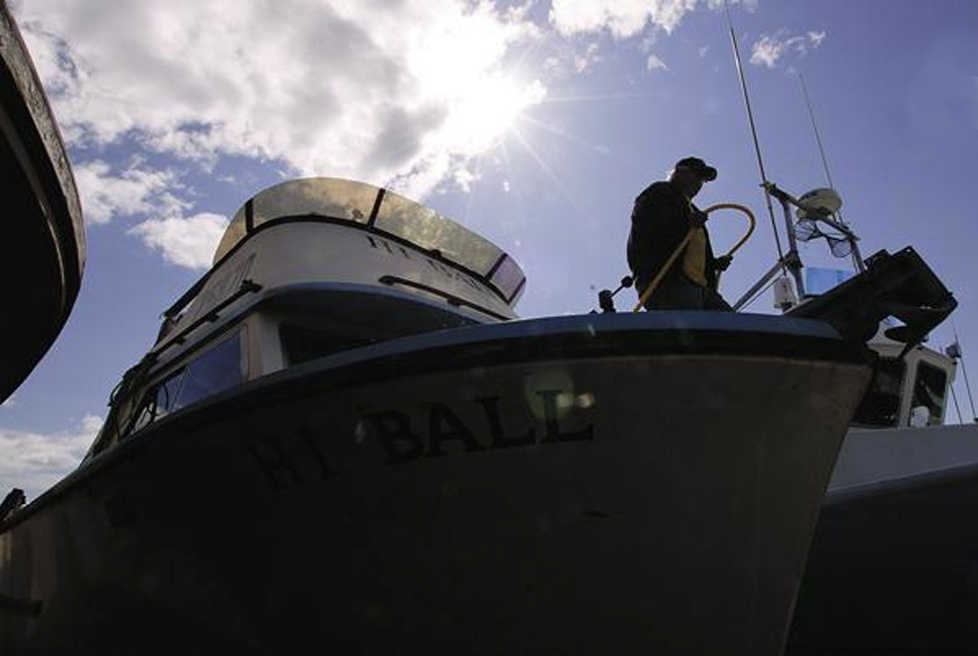A common and often-repeated maneuver on commercial fishing boats throughout Alaska involves reaching just below the head of a freshly caught fish into its gill slit, grabbing the gills and then bending and twisting the wrist to rip them out.
It’s injurious to the fish, it’s supposed to be. But, for the people who do it thousands of times throughout the course of a fishing season, the repetitive movement can lead to carpal tunnel or tendonitis; injuries that could be avoided if industry workers were retrained to avoid wrist damage.
An Alaska Marine Safety Education Association, or AMSEA, class offered Saturday at the Cook Inlet Aquaculture Association building in Kenai will focus on prevention for common injuries and ergonomics for commercial fishers — specifically gillnetters in the Cook Inlet.
“A lot of fishermen haven’t given enough attention to ‘how can I make this easier on myself?’ The answer for most fishermen is, ‘I get my own boat and hire a young, strong crew,’” said AMSEA executive director Jerry Dzugan. “The answer I get from older fishermen who mostly have some musculoskeletal problems is ‘I wish I would have known about ergonomics 20-30 years ago,’ and the answer I get from younger guys is that its only a problem for older fishermen.”
Common injuries for commercial fishers are wide-ranging, Dzugan said. Tendonitis and carpal tunnel syndrome are prevalent, as are lower back, shoulder, elbow and wrist injuries from lifting, moving and repetitive motion.
The class “Strains, Sprains and Pains” will focus on ergonomics and injury prevention — and will also cover issues that can be boat-specific or easily-ignored.
“I was talking to a longliner salmon troller last year. He grew up on his boat, it was his parents’ boat, he’s been on that boat for probably 30 years,” Dzugan said. “Last year, he put in a table for cleaning fish that was just the right height — both him and the crewmembers all said in unison that was the best thing that ever happened on this boat. It’s the right height, the right shape and they can process fish on it instead of doing it on a deck.”
The way a fishing boat is constructed can be an often-overlooked issue when fishers are considering ways to alleviate pain and body-stress from the strenuous job.
On gillnetting boats, fish are commonly put on ice in the hold after being picked from the net.
“I would put ice in my hold and I would have to go down in the hold with a tiny plastic shovel and then take these fish and lift them above my head to get them out,” Dzugan said. “I’ve seen a couple (of boats that) have PVC pipes at the rail and … when they pick a fish out of the net, they slide it down the PVC pipe and it goes into the hatch. They don’t have to bend over, they don’t have to walk it over — they can just pick fish. It’s quicker, it’s better for fish quality and it’s certainly a lot less motion.”
While the class won’t cover how individual fishers can make their boats more ergonomic and easier to work around, Dzugan said it would cover the basic principals a person would need to know when considering how to tailor a boat’s deck and operating areas. Dzugan said getting fishers to understand that they don’t have to be in pain and can take steps to change their work environments to prevent injury, can be a difficult point to make.
“For fishermen, it’s a little harder for them to recognize it, because I think first of all, a lot of them are family-owned operations; the problem is they’ve accepted it,” Dzugan said. “You’re trying to change that fact, you don’t have to accept this, you don’t have to work in the arrangement of your boat because that’s the way it came or that’s the way it’s traditionally done.”

